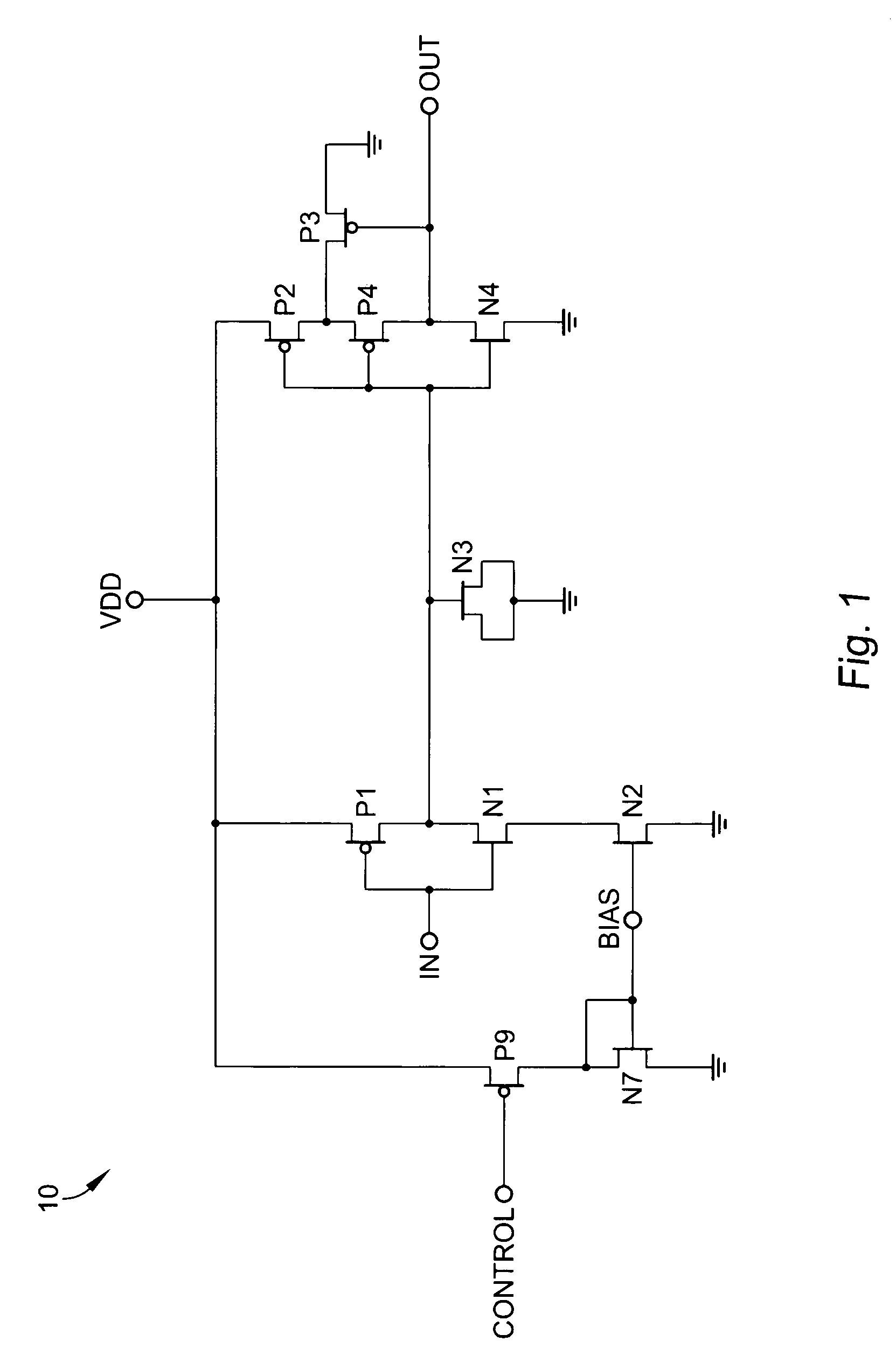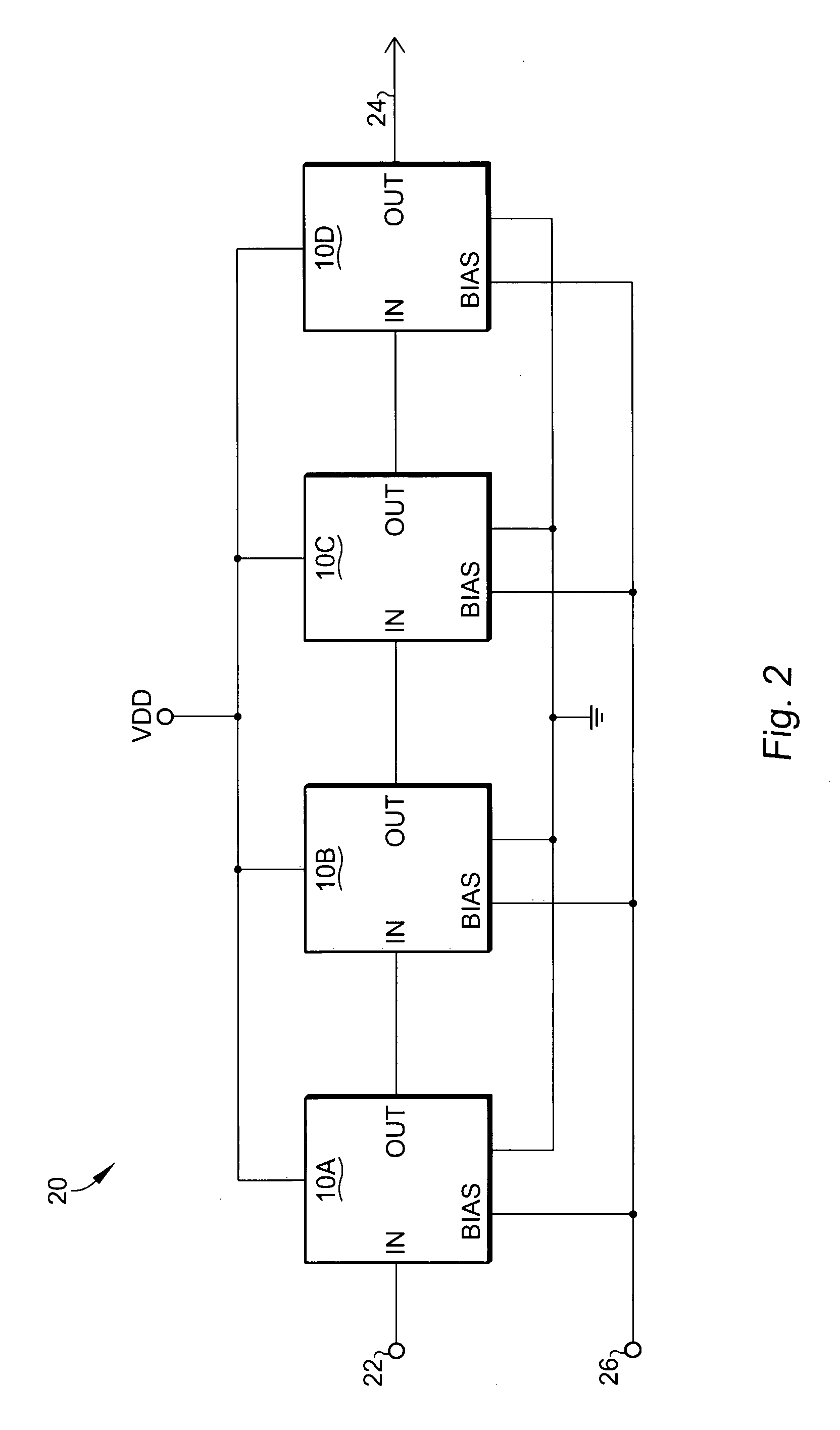SET and SEGR resistant delay cell and delay line for Power-On Reset circuit applications
a technology of delay cell and segr, which is applied in the direction of pulse manipulation, pulse technique, electrical apparatus, etc., can solve the problems of affecting the performance of the integrated circuit into which the por circuit was incorporated, damage to the circuit, and may not be optimum for circuits used in space environments, so as to increase the circuit area, improve the effect of performance and increase the manufacturing cos
- Summary
- Abstract
- Description
- Claims
- Application Information
AI Technical Summary
Benefits of technology
Problems solved by technology
Method used
Image
Examples
Embodiment Construction
[0014]Referring now to FIG. 1, an SET and SEGR resistant delay cell 10 includes a delay input node marked “IN” and a delay output node marked “OUT”. A one-sided current starved inverting input section (odd delay stage) has an input coupled to the delay input, and an output. A capacitor is coupled between the output of the input section and ground. A half-Schmitt trigger circuit (even delay stage) has an input coupled to the output of the input section, and an output coupled to the delay output.
[0015]The input section, which is also referred to as an odd delay stage, includes a P-channel transistor P1 having a source coupled to VDD, a gate coupled to the input, and a drain coupled to the output. A first N-channel transistor N1 has a source, a gate coupled to the input, and a drain coupled to the output. A second N-channel transistor N2 has a source coupled to ground, a gate for receiving a bias voltage at a node marked “BIAS”, and a drain coupled to the source of the first N-channel ...
PUM
 Login to View More
Login to View More Abstract
Description
Claims
Application Information
 Login to View More
Login to View More - R&D
- Intellectual Property
- Life Sciences
- Materials
- Tech Scout
- Unparalleled Data Quality
- Higher Quality Content
- 60% Fewer Hallucinations
Browse by: Latest US Patents, China's latest patents, Technical Efficacy Thesaurus, Application Domain, Technology Topic, Popular Technical Reports.
© 2025 PatSnap. All rights reserved.Legal|Privacy policy|Modern Slavery Act Transparency Statement|Sitemap|About US| Contact US: help@patsnap.com



